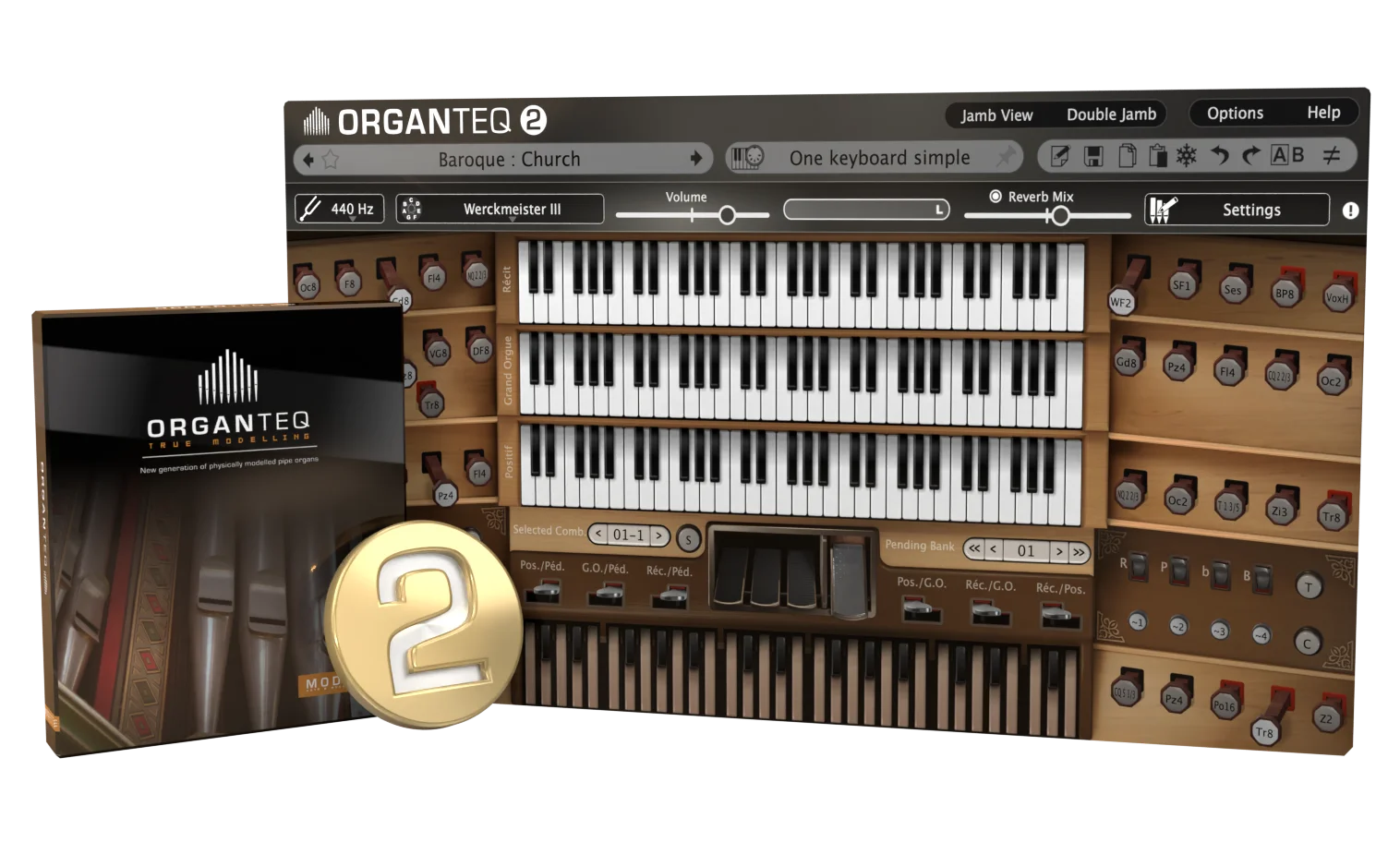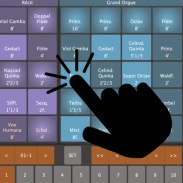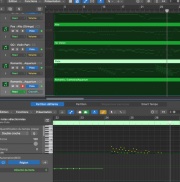
New generation of physically modelled pipe organs
Organteq offers realtime synthesis of organ pipes sound based on physical model. By capturing the complex physics of flue and reed pipes, it brings a vivid instrument of stunning playability and breathtaking realism.
Everything in Organteq can be tweaked - from the composition of the organ to the sound of each pipe - making it possible to reproduce a wide variety of existing organs or to explore unknowns musical lands.
Organteq is a physically modelled pipe organ which you can install on your computer (PC/Mac). It can be used both in standalone mode and as a 64-bit instrument plug-in in VST, AAX and AudioUnits hosts.
By utilizing the physical model of Modartt's award-winning virtual instrument Pianoteq, the playability and complex behaviours of real acoustic instruments are simulated. By omitting usage of samples, the file size is just a tiny fraction of that offered by other virtual organs, perfect for use on any modern laptop.
The sound is generated in real time from scratch, reproducing the typical and variable pipe attack transients "chiff" as well as the 3D configuration, where pipes are located in space according to their keyboards. Even the action noises from keys, stops and couplers are modelled. All this makes the instrument livelier than sample based variants, bringing more realistic variability in attack and sustain.
Advanced physical modelling
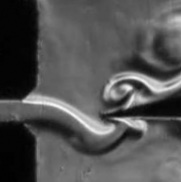
- jet/labium aero-acoustics and beating reed
- pipe resonances
- sound radiation
- division acoustics
- room acoustics
Large collection of unique stops
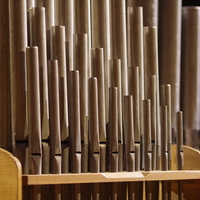
- Unique stops from 32' to 1':
-
- 36 German Baroque stops
- 39 French Romantic stops
Versatile console
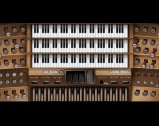
- 3 manual keyboard and one pedalboard
- Up to 50 customizable stop slots
- 3 stop-per-stop assignable and customizable expression pedal
- 4 monophonic couplers (bass and treble)
- 24-step stop-per-stop assignable crescendo pedal
Advanced output settings
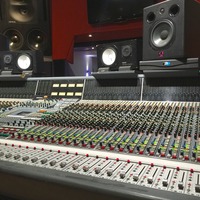
- noise volume, stereo width, C/C# separation
- reverb settings
- audio routing mix matrix up to 8 channels
- division box parameters (EQ, box reverb, blending with room acoustics)
Pipe-specific parameters

- each stop can be voiced pipe-per-pipe:
- volume
- detune
- brightness
- air noise
- wind jitter
- chiff amount
- tremulant sensitivity
More than 50 built-in presets

- 5 archetypal german baroque organs & variations
- 5 archetypal french romantic organs & variations
- 24 historical & modern organs
- Experimental organs
